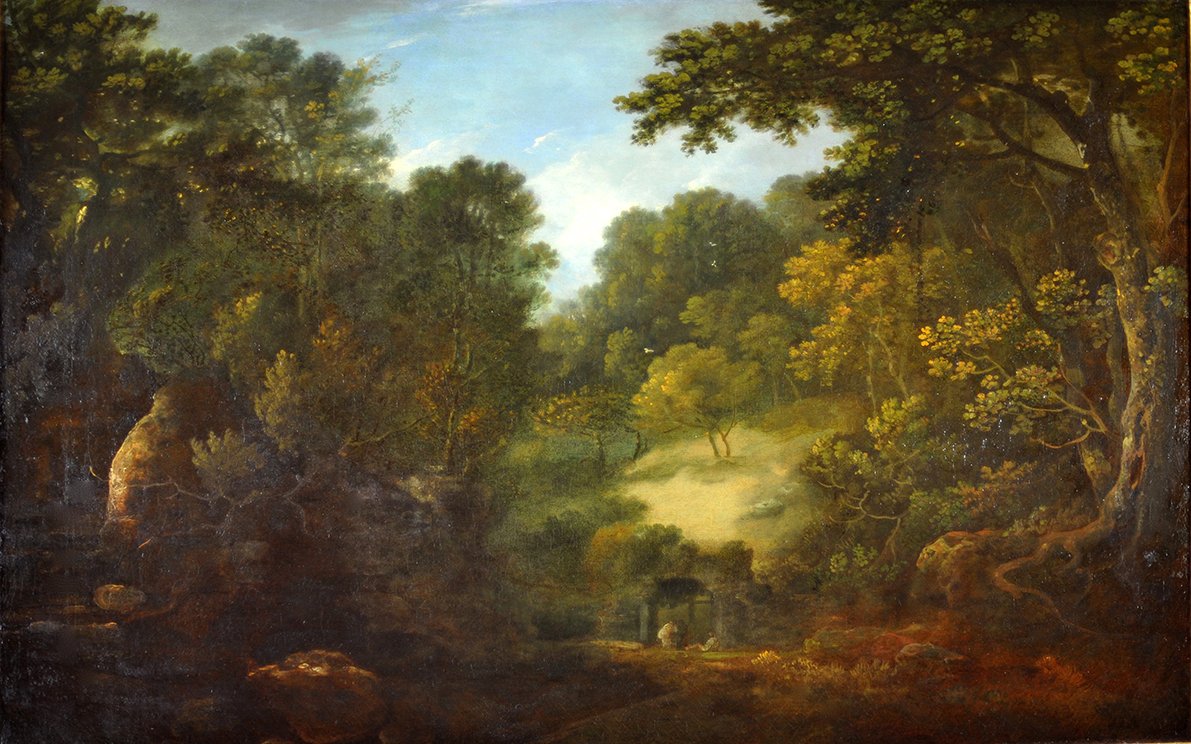
A View of the Villa Chigi at Ariccia
1713/14 -1782
Canvas 28.5 x 38.5 ins.
Collection Details
Bought from the artist by Sir Watkin Williams-Wynn, 4th Bt. Among the Wynnstay papers is a document in Wilson’s handwriting, headed Sir Watkin Williams Wynn Bart to Richd. Wilson Dr. June 5th 1770. It contains inter alia these two entries: To a Landskip taken in the Villa Ghigi at Lariccia £26:6:0 and Its Companion £26:6:0. These must refer to the present picture and its companion (cf Constable, infra, 1954). Sold by Sir Watkin Williams-Wynn at Sotheby’s, 7 July 1965, when it was bought by Lord Faringdon.
Literature
E K Waterhouse, Burlington Magazine, LXXXVIII, 1946, p. 227; W G Constable, Wilson, 1953, pp. 88, 184, pl. 53b; idem, ‘Richard Wilson: Some Pentimenti’, Burlington Magazine, XCVI, 1954, p. 140.
Exhibition Details
Probably the picture exhibited with its companion at the BI in 1814 (Nos. 127, 144) and 1848 (Nos 131, 139) and at Manchester, Art Treasures, 1857 (Nos. 151, 162) variously entitled Woody Scene, View in Wales, etc; exhibited by the Arts Council, Masterpieces from Welsh Houses, 1946, No. 13.
Companion Picture
for this picture, see Constable (1953), pl. 53a, as Sandpit and Ruins in a Glade, and idem (1954) with the corrected identification. It remained in the Williams-Wynn collection until it was sold in 1965.
Background
Until the publication by Constable in 1954 of the document partly quoted above, the picture was always assumed to be a Welsh landscape, probably to be equated with one of the ‘two small views in Wales’ mentioned by Benjamin Booth, the well-known collector of Wilson’s paintings, as hanging in Sir Watkin Williams-Wynn’s house in St James’s Square (unpublished notes, document 4). Constable (1953), in tentatively dating the picture, then described as Sandpit and Ruins in a Glade, 1758–60 – ie, soon after Wilson’s return to England from Italy – added the rider that it was painted in a style to which the artist was to revert in the late 1760s. In view of the date of the picture’s acquisition, the hypothesis of a later date may be correct.
On the other hand, the supposition that it was an earlier painting, later modified, cannot be discounted. It is paradoxical that Waterhouse emphasises, in what we now know to be an Italian view, its Dutch characteristics (the patch of sunlight in a woodland glade is a popular theme in Dutch painting). He adds of this area that Wilson had ‘carelessly painted it over a landscape – perhaps with Italian ruins – which he did not trouble fully to eliminate …’
The frame was probably designed by Adams.
The Trustees of the Faringdon Collection 26.
All rights reserved.
